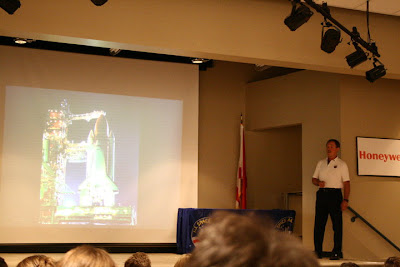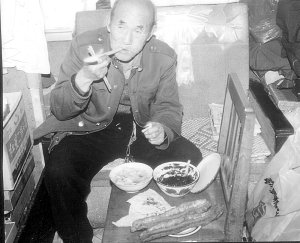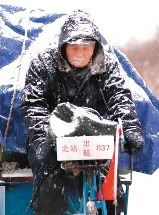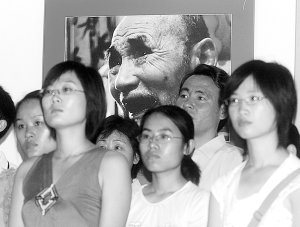Here's the 3rd part of the 4 parts report on my experiences at the HONEYWELL NASA Educators@SpaceCamp.
In this report I'll describe in detailed what I have learnt at the camp.
Enjoy!
Rodney Tan
-----------------------------------
3) What were the contents of the program
This programme provided an opportunity to feed my fascination with space and technology. It was structured along the American Space Programme and many of the lessons were developed by NASA with the cooperation of STEM (Science, Technology, Engineering, and Mathematics) teachers in the US.
For a detailed listing of all the activities, please go to: http://www.spacecamp.com/educators/honeywell/ and click ‘Sample Educators Workshop Description’
The main activities can be divided into Maths, Science, History, Team Building, Guest Speakers and Museum Visit.
Maths activities
Martian Maths
An interactive and energetic session for learning basic skills, factorials, probability and order of operations. Adaptable for other subjects.
NASA's Engineering Design Challenges – Thermal Design
This activity replicates engineering challenges faced by NASA engineers. Working under the supervision of our facilitators, we design, build, test, re-design, and re-build models that meet specified design criteria. We employed the same analytical skills as engineers as they improve their designs.
Built Environment
Using measurement, graphing, volume, ratio, scale, proportion and model making, we build a moon or mars colony out of found items. We use critical thinking and decision making to create an out of this world environment. Numerous activities using math to solve real world problems are included.
Science Activities
Lunar Stations
In this multi station workshop we explored various themes as our students would prepare to inhabit the moon. The stations cover rovers, craters, volcanoes, and soil experiments.
On to Mars
This workshop contains various activities that will be necessary in the exploration of Mars. Designing the perfect Mars Lander, soil activities, and other fun Mars themed activities will get your entire class motivated to be the first explorers to Mars! Activities are provided by the Arizona State University Mars Project.
Toys in Space
In 1985 & 1993, toys were taken into space so students on earth could learn about how things they were familiar with reacted in microgravity. This workshop utilizes various physics principals, using common toys and the participants predict what will happen to them in microgravity. The videos are on the Internet, so students can see exactly how the toys reacted in space.
Both Science & Math
Rocket Construction
We design, select materials, construct and launch water bottle rockets. Each group will form a "company" as well as assign tasks to each team member. Groups will complete a scaled drawing of the rocket, test the rockets for stability and accuracy, and keep a budget. This activity is based on NASA's rocketry curriculum.
Engine Rockets were also built utilizing higher level math and physics. This workshop also covered ways to bring rocketry across the high school curriculum. It is based on activities developed by Estes and Team America Rocketry Challenge.
Mission Patch
We learnt about the history and symbolism of space mission patches and we then apply our knowledge in creating a patch that uniquely captures the characteristics of our individual team along with the goals of our simulated mission.
Living & Working in Space
We learnt about what it is like to live and work in space including food, exercise, experiments and how to go to the bathroom.
History
History of Space Program
Ed Buckbee, founder of Space Camp, recounted the early days of NASA in Huntsville. We heard about interesting and humourous stories from behind the scenes at NASA and Space Camp and receive a copy of his book, The Real Space Cowboys.
Museum
During the week, we explored the museum, and counsellors brief us on the following topics:
History of Space Travel
Rocket City Legacy
Mercury, Gemini, and Apollo programs
Pathfinder and the Shuttle Program
Rocket Park
Davidson Center for Space Exploration and the restored Saturn V rocket
Team Building
MISSIONS
Shuttle Orientation
We were introduced to the major components of the Space Transportation System, as well as the highlights of a mission sequence. The topics were illustrated using hands-on activities that can easily be transferred to the classroom setting.
Mission Overview
We were given an overview of the mission in which we will participate. A description of the different simulation areas of the mission was given, along with an explanation of astronaut and ground positions and responsibilities.
Mission Training
Here we were provided with specific, in-depth training on how to conduct our simulated shuttle mission. The training was conducted in all areas of the mission simulation including cockpit procedures, EVA procedures, satellite deployment, scientific experimentation aboard Space Station, and Mission Control responsibilities. Practice time was given in following specific checklists and solving problems.
Space Shuttle Mission
We conducted a simulated space shuttle mission during the week. Specific activities in the mission include launch and landing of the shuttle, satellite deployment, assembly of a large space structure, and conducting of experiments while in space. In this scenario, we were challenged with various types of problems that require teamwork and critical thinking in order to solve the problems and have a successful mission.
Astronaut Simulators
The unique sensations of space flight were reinforced through the use of simulators, such as the 1/6 gravity chair that allows a person to experience how astronauts trained to walk on the moon. The MMU is a full-sized mock-up of NASA’s Manned Manoeuvring Unit. The Multi-Axis Trainer allowed us to experience the dramatic sensation of being aboard a tumbling aircraft. All the simulators were patterned after actual simulators used for training NASA astronauts. The simulators were also tools for demonstrating and experiencing Newton Laws of Motion. However, the Astronaut Simulators have a weight limit.
IMAX Theater
We saw a movie filmed in IMAX at the Omnimax Theater. It showed the amazing space images captured by the Hubble and the rescue mission to fix-up the Hubble Telescope.
All these activities were put together to give teachers the resources and ideas to excite their students in learning Space Science.
 |
| Hoot Gibson - ex-military test plane pilot, Shuttle pilot & currently a commercial airline pilot giving a very informative talk about his interest in Space flight. He flew 5 shuttle missions. |
 |
| I was standing on the mezzanine floor and releasing the craft that was supposed to land the egg safely. |
 |
| Our first briefing before starting the Educators Space Camp activities. Giving the briefing is Ruth. She's the head honcho for the entire Educators@SpaceCamp programme. |
 |
| Setting up my model rocket at bay 12 before the electronic launch. Notice the wires! |
 |
| Our team Kibo's team building activity. I'm sure you can identify me. |

































